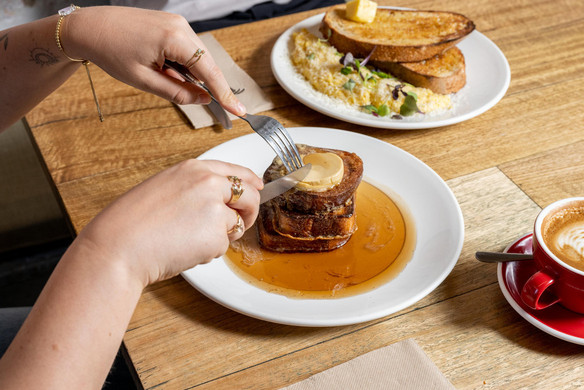Table of contents
A seasonal restaurant menu offers your customers fresh, flavourful ingredients and can help bring in more sales while keeping operational costs relatively low.
Since Starbucks (US) launched its pumpkin spice latte in 2003, other quick-service and fast-food restaurants including Tim Hortons, Dunkin’ Donuts, Krispy Creme, and, most recently, Wendy’s have added limited-time menu items featuring the flavour. Its popularity isn’t slowing. According to Future Market Insights data, the global Pumpkin Spice Products market — worth $1.1 billion in 2023 — is expected to reach $2.4 billion by 2033, and it’s even creeping into Australia too. Tapping into seasonal menu trends can bring more dollars into your restaurant without much strain. That’s because when produce like the beloved Australian mango is in season, it’s normally more widely available and often cheaper to source and keep in stock.
Yet pumpkin spice is just one example of a seasonal ingredient you can consider adding to your menu for a limited time. From heart flavours like apples, dates, and bananas in the winter to mangoes, avocados, and pineapples in the summer, options are abundant all year round. With the right restaurant technology in place, you can easily use sales data to forecast future demand and make seasonal menu decisions that bring your restaurant the most business.
Year-round considerations for your seasonal menu
To make your restaurant menu seasonal, you don’t have to retire your best-selling dishes. Instead, try to incorporate a few new options that feature in-season ingredients and flavours. If these are already on your menu, drawing attention to them can attract more diners to buy.
Spring/Summer menu considerations
A recent forecast shows the cost of living playing a big part in consumer cost-awareness as the trend heads towards smaller finger foods.
In the spring restaurants begin to see spikes in orders for colder, fresher dishes, including poke bowls and salads. That may be because spring produce – greens, asparagus, peas, strawberry, rhubarb – are all in season. And as the weather warms, more diners tend to crave more refreshing dishes like ice cream and acai bowls.
As you consider your spring and summer restaurant menus, think about seasonal trends and promotions, such as patio season re-approaching and preparing for the Christmas holidays. Now is a good time to think about highlighting your beer offerings. As spring rolls into summer, things start to heat up.
Traditional summer produce such as pineapple, peaches, watermelon and more also become popular during this season, opening opportunities for both food and drink menu additions.
Autumn/winter menu considerations
Autumn can still be quite warm across Australia. But as the days start to cool you can start to add warm dishes such as curries, soups and stews to your menu, which feature seasonal vegetables like sweet potatoes, pumpkin and kale.
Use your restaurant technology to guide menu decisions
While research suggests that menu items will perform well throughout the year, every restaurant is unique. What may be a top seller for you in the spring or autumn may surprise you. That’s where your restaurant technology can come in handy.
With a point-of-sale system like Square for Restaurants, you can easily access your sales data in your Square Dashboard. Here you’re able to see real-time information on what items sell best, on how much customers are spending and on how often people return. This data can help you test important decisions, such as when to launch seasonal menu items, which types of items you should include and at what price range. Depending on your sales information, it might make sense to explore opportunities for dynamic pricing structures, which involve adjusting menu prices up or down depending on supply and demand.
No matter what time of the year it is, tweaking your offerings slightly can give your restaurant business a boost. Tracking that information with your technology equips your team to make decisions that are sure to succeed, which ultimately helps keep things running smoothly even as operations change.
This article is for informational purposes only and does not constitute professional advice. For specific advice applicable to your business, please contact a professional.
![]()











